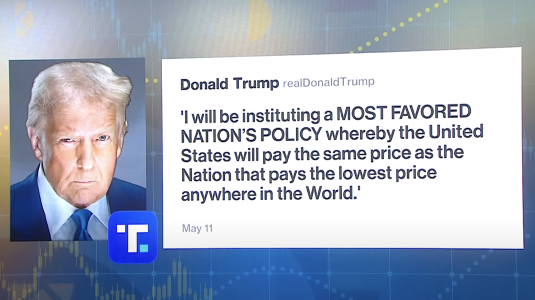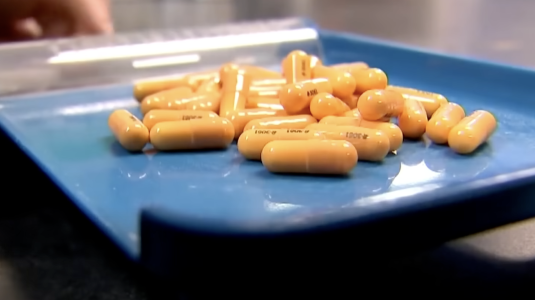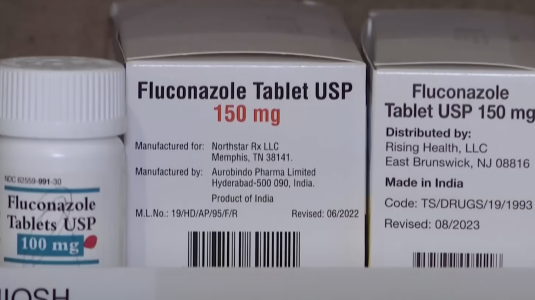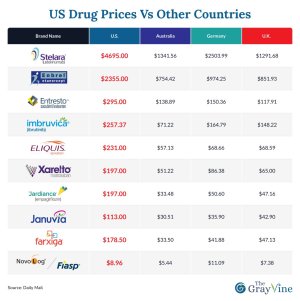Good news? Drugs that may get cheaper under Trump’s latest executive order
- Replies 0
If you’ve ever opened a pharmacy bill and felt your blood pressure spike, you’re not alone. Americans—especially those of us on Medicare—pay more for prescription drugs than almost anyone else in the world.
But a new executive order from former President Donald Trump is promising to shake up the system and potentially slash the prices of some of the most expensive medications in the country.
So, what’s really changing? Which drugs could see their prices plummet? And what does this mean for you, your loved ones, and your wallet?
What’s in the Executive Order?
President Donald Trump recently highlighted a new executive order aimed at aligning US drug prices with those in Europe and the UK, which could lead to lower costs for medications used by millions of Americans.
While the order does not specify which drugs will be targeted, a similar policy proposed in 2020 included Medicare Part B drugs, which cover treatments for seniors in hospitals or clinics.
However, that 2020 plan was blocked by a federal judge, who ruled that the government overstepped its authority by bypassing Congress.
The 2020 policy narrowly applied to Medicare Part B drugs, such as immunosuppressants, chemotherapy, and vaccines for seniors, while the new executive order appears broader, referencing "American patients" and "public and private payers."

US drug prices are typically three to five times higher than those in other developed countries, with Americans spending about twice as much per person on drugs—$963 compared to $466 elsewhere.
“It’s called Most Favored Nation,” Trump explained, referring to the policy. "We're going to pay the lowest price there is in the world. We will get, whoever is paying the lowest price; that’s the price that we're going to get."
The Most Favored Nation policy, long advocated by Trump, is designed to drive down U.S. drug prices by requiring pharmaceutical companies to offer the same steep discounts to Americans that they provide to other wealthy nations.
However, before it can be implemented, the proposal would need to be approved by Congress, and Big Pharma is expected to lobby against it and potentially file lawsuits to block it.
Also read: Taxpayers stand to save $30 billion with Medicaid reform
DailyMail.com has compiled a list of the most expensive prescription drugs under Medicare Part B that may be affected by Trump’s Most Favored Nations plan.
Around one in eight Medicare enrollees use these drugs, and aligning prices with those in the EU could allow the government to treat hundreds of thousands more people without increasing spending.
Which Drugs Could See Price Cuts?
Here’s where it gets personal. The following is a list of some of the most expensive and widely used drugs under Medicare Part B that could be affected by the new policy.
If you or someone you love relies on any of these, you could see major savings if the order takes effect.


Source: NBC News / Youtube.
Source: CNN / Youtube.

What’s Next?
Trump told reporters on Monday that a major facet of his plan is to force other countries to pay more to pharmaceutical companies or risk losing access to the US market. He did not offer an explanation of the legal mechanisms he would use to enforce this.
“You have to also charge other nations more,” Trump said. “Because they’re really—we’re bearing the cost of all of this. We have people—rich countries—paying a tiny fraction of what we pay."
He also vowed to "get rid of the middlemen," targeting pharmacy benefit managers (PBMs).
PhRMA also blames PBMs, which negotiate drug coverage for insurers like Aetna and collect manufacturer rebates—often keeping more than half the spending.
Also read: How Trump’s latest executive order could impact your Medicare and Medicaid benefits—What you need to know
Ubl, CEO of PhRMA, said: “The US is the only country in the world that lets PBMs, insurers, and hospitals take 50 percent of every dollar spent on medicines. The amount going to middlemen often exceeds the price in Europe.”
Trump, meanwhile, said: “We’re doing things nobody ever thought could be done. The middlemen became very, very rich.”
In Europe, government-run health systems negotiate drug prices directly with pharmaceutical companies, bypassing middlemen.
Countries like the UK, France, and Germany have national agencies that determine coverage and set prices nationwide—eliminating the need for pharmacy benefit managers (PBMs) common in the US.
Source: Bloomberg Television / Youtube.
“This is what we’ve been doing all along,” Trump stated. “We will no longer subsidize the health care of foreign countries, which is what we were doing… where they paid a small fraction for the same drug than what many, many times more for.”
“We no longer tolerate profiteering and price-gauging from big pharma,” he added. “It was really the countries that forced big pharma to do things that, frankly, I'm not sure they really felt comfortable doing. But they've gotten away with it, these countries.”
Read next: Reminder: Who’s getting up to $5,108 from Social Security this week?

Are you taking any of the drugs on this list? Have you struggled with high medication costs? Do you think the government should negotiate drug prices, or do you worry about unintended consequences? Share your experiences, questions, and opinions in the comments below!
But a new executive order from former President Donald Trump is promising to shake up the system and potentially slash the prices of some of the most expensive medications in the country.
So, what’s really changing? Which drugs could see their prices plummet? And what does this mean for you, your loved ones, and your wallet?
What’s in the Executive Order?
President Donald Trump recently highlighted a new executive order aimed at aligning US drug prices with those in Europe and the UK, which could lead to lower costs for medications used by millions of Americans.
While the order does not specify which drugs will be targeted, a similar policy proposed in 2020 included Medicare Part B drugs, which cover treatments for seniors in hospitals or clinics.
However, that 2020 plan was blocked by a federal judge, who ruled that the government overstepped its authority by bypassing Congress.
The 2020 policy narrowly applied to Medicare Part B drugs, such as immunosuppressants, chemotherapy, and vaccines for seniors, while the new executive order appears broader, referencing "American patients" and "public and private payers."

President Donald Trump announced a new executive order aiming to align US drug prices with those in Europe and the UK, targeting significant reductions for medicines covered under Medicare Part B and likely beyond. Image source: NBC News / Youtube.
US drug prices are typically three to five times higher than those in other developed countries, with Americans spending about twice as much per person on drugs—$963 compared to $466 elsewhere.
“It’s called Most Favored Nation,” Trump explained, referring to the policy. "We're going to pay the lowest price there is in the world. We will get, whoever is paying the lowest price; that’s the price that we're going to get."
The Most Favored Nation policy, long advocated by Trump, is designed to drive down U.S. drug prices by requiring pharmaceutical companies to offer the same steep discounts to Americans that they provide to other wealthy nations.
However, before it can be implemented, the proposal would need to be approved by Congress, and Big Pharma is expected to lobby against it and potentially file lawsuits to block it.
Also read: Taxpayers stand to save $30 billion with Medicaid reform
DailyMail.com has compiled a list of the most expensive prescription drugs under Medicare Part B that may be affected by Trump’s Most Favored Nations plan.
Around one in eight Medicare enrollees use these drugs, and aligning prices with those in the EU could allow the government to treat hundreds of thousands more people without increasing spending.
Which Drugs Could See Price Cuts?
Here’s where it gets personal. The following is a list of some of the most expensive and widely used drugs under Medicare Part B that could be affected by the new policy.
If you or someone you love relies on any of these, you could see major savings if the order takes effect.

Trump’s “Most Favored Nation” approach would require pharmaceutical companies to offer Americans the same lowest prices they currently offer to other developed nations, but the policy faces likely resistance from Congress, pharmaceutical companies, and could face legal challenges. Image source: Bloomberg Television / Youtube.
Cancer Treatments (Chemotherapy & Immunotherapy)
(Used by more than 1,230,000 patients)- Keytruda (pembrolizumab)
- Cost per dose: $10,800–$15,200
- Used to treat melanoma, lung, bladder cancers, Hodgkin’s lymphoma
- Expected cost under the new EO: about $4,100 (Germany), a 73% reduction
- Opdivo (nivolumab)
- Cost per dose: $7,500–10,500
- Used to treat lung, kidney, liver, colorectal cancers
- Expected cost under the new EO: $2,800 (France), a 73% reduction
- Darzalex (daratumumab)
- Cost per dose: $6,500
- Used to treat multiple myeloma
- Expected cost under the new EO: $2,900 (Netherlands), a 55% reduction
- Rituxan (rituximab)
- Cost per dose: $5,200–8,000
- Used to treat non-Hodgkin’s lymphoma
- Expected cost under the new EO: $2,400 (Belgium), a 70% reduction
- Tecentriq (atezolizumab)
- Cost per dose: $8,200
- Used to treat bladder, lung, and breast cancers
- Expected cost under the new EO: $3,500 (Germany), a 57% reduction
- Herceptin (trastuzumab)
- Cost per dose: $4,500
- Used to treat anemia from chemotherapy
- Expected cost under the new EO: $1,900 (UK), a 58% reduction
- Procrit
- Cost per dose: $750
- Used to treat anemia
- Expected cost under the new EO: $320 (Spain), a 57% reduction

If enacted, the policy could slash the cost of many high-priced drugs—including cancer, autoimmune, and rare disease treatments—by 30–80%, potentially allowing the government to fund access for more patients without increasing spending. Image source: ABC10 / Youtube.
Autoimmune & Inflammatory Diseases
- Orencia (abatacept)
- Cost per dose: $1,600
- Used to treat rheumatoid arthritis
- Expected cost under the new EO: $700, a 54% reduction
- Actemra (tocilizumab)
- Cost per dose: $1,200
- Used to treat rheumatoid arthritis, COVID inflammation
- Expected cost under the new EO: $550, a 54% reduction
- Enbrel (etanercept)
- Cost per dose: $1,600
- Used to treat psoriasis, psoriatic arthritis
- EU average cost per dose: $700 (Spain)
- Expected cost under the new EO: $700, a 56% reduction
- Stelara (ustekinumab)
- Cost per dose: $14,000
- Used to treat psoriasis, Crohn’s disease
- Expected cost under the new EO: $6,500, a 54% reduction
- Xolair (omalizumab)
- Cost per dose: $1,300
- Used to treat severe asthma, chronic hives
- Expected cost under the new EO: $600, a 117% reduction
Source: NBC News / Youtube.
Neurological & Rare Diseases
- Tysabri (natalizumab)
- Cost per dose: $7,000
- Used to treat multiple sclerosis, Crohn’s disease
- Expected cost under the new EO: $3,200, a 119% reduction
- Soliris (eculizumab)
- Cost per dose: $32,000
- Used to treat PNH, aHUS (rare blood disorders)
- Expected cost under the new EO: $18,000 (India), a 78% reduction
Eye Diseases
- Eylea (aflibercept)
- Cost per dose: $1,850
- Used to treat wet AMD, diabetic retinopathy
- Expected cost under the new EO: $800 (India), a 131% reduction
- Lucentis (ranibizumab)
- Cost per dose: $1,200
- Used to treat wet AMD, macular edema
- Expected cost under the new EO: $450 (France), a 167% reduction
Source: CNN / Youtube.
Supportive Care (Chemo Side Effects/Bone Health)
- Neulasta (pegfilgrastim)
- Cost per dose: $6,200
- Boosts white blood cells post-chemo
- Expected cost under the new EO: $2,600 (Spain), a 121% reduction
- Prolia (denosumab)
- Cost per dose: $1,300
- Used to treat osteoporosis (cancer-related bone loss)
- Expected cost under the new EO: $600 (Italy), a 117% reduction
Other High-Cost Therapies
- Rebif (interferon beta-1a)
- Cost per dose: $3,600/month
- Used to treat multiple sclerosis
- Expected cost under the new EO: $1,500 (Netherlands), a 140% reduction
- Nucala (mepolizumab)
- Cost per dose: $4,000
- Used to treat severe asthma
- Expected cost under the new EO: $1,800 (Norway), a 122% reduction

The US pays much more for prescription drugs compared to other wealthy countries, partly due to the presence of pharmacy benefit managers (PBMs) and lack of direct government negotiation. Image source: ABC10 / Youtube.
What’s Next?
Trump told reporters on Monday that a major facet of his plan is to force other countries to pay more to pharmaceutical companies or risk losing access to the US market. He did not offer an explanation of the legal mechanisms he would use to enforce this.
“You have to also charge other nations more,” Trump said. “Because they’re really—we’re bearing the cost of all of this. We have people—rich countries—paying a tiny fraction of what we pay."
He also vowed to "get rid of the middlemen," targeting pharmacy benefit managers (PBMs).
PhRMA also blames PBMs, which negotiate drug coverage for insurers like Aetna and collect manufacturer rebates—often keeping more than half the spending.
Also read: How Trump’s latest executive order could impact your Medicare and Medicaid benefits—What you need to know
Ubl, CEO of PhRMA, said: “The US is the only country in the world that lets PBMs, insurers, and hospitals take 50 percent of every dollar spent on medicines. The amount going to middlemen often exceeds the price in Europe.”
Trump, meanwhile, said: “We’re doing things nobody ever thought could be done. The middlemen became very, very rich.”
In Europe, government-run health systems negotiate drug prices directly with pharmaceutical companies, bypassing middlemen.
Countries like the UK, France, and Germany have national agencies that determine coverage and set prices nationwide—eliminating the need for pharmacy benefit managers (PBMs) common in the US.
Source: Bloomberg Television / Youtube.
“This is what we’ve been doing all along,” Trump stated. “We will no longer subsidize the health care of foreign countries, which is what we were doing… where they paid a small fraction for the same drug than what many, many times more for.”
“We no longer tolerate profiteering and price-gauging from big pharma,” he added. “It was really the countries that forced big pharma to do things that, frankly, I'm not sure they really felt comfortable doing. But they've gotten away with it, these countries.”
Read next: Reminder: Who’s getting up to $5,108 from Social Security this week?
Key Takeaways
- President Donald Trump announced a new executive order aiming to align US drug prices with those in Europe and the UK, targeting significant reductions for medicines covered under Medicare Part B and likely beyond.
- If enacted, the policy could slash the cost of many high-priced drugs—including cancer, autoimmune, and rare disease treatments—by 30–80%, potentially allowing the government to fund access for more patients without increasing spending.
- Trump’s “Most Favored Nation” approach would require pharmaceutical companies to offer Americans the same lowest prices they currently offer to other developed nations, but the policy faces likely resistance from Congress, pharmaceutical companies, and could face legal challenges.
- The US pays much more for prescription drugs compared to other wealthy countries, partly due to the presence of pharmacy benefit managers (PBMs) and lack of direct government negotiation—a practice common in Europe but not in the US, which Trump’s policy intends to change.
Are you taking any of the drugs on this list? Have you struggled with high medication costs? Do you think the government should negotiate drug prices, or do you worry about unintended consequences? Share your experiences, questions, and opinions in the comments below!
Last edited:







